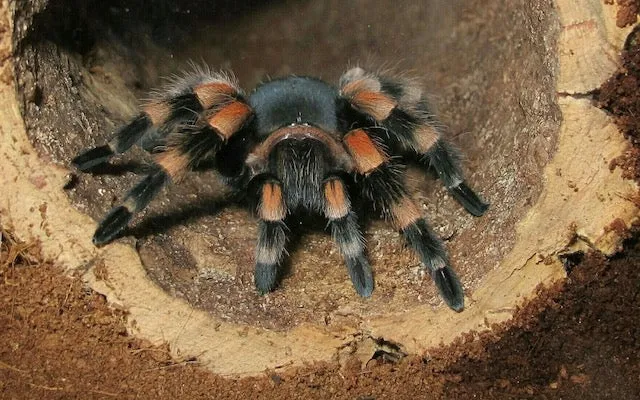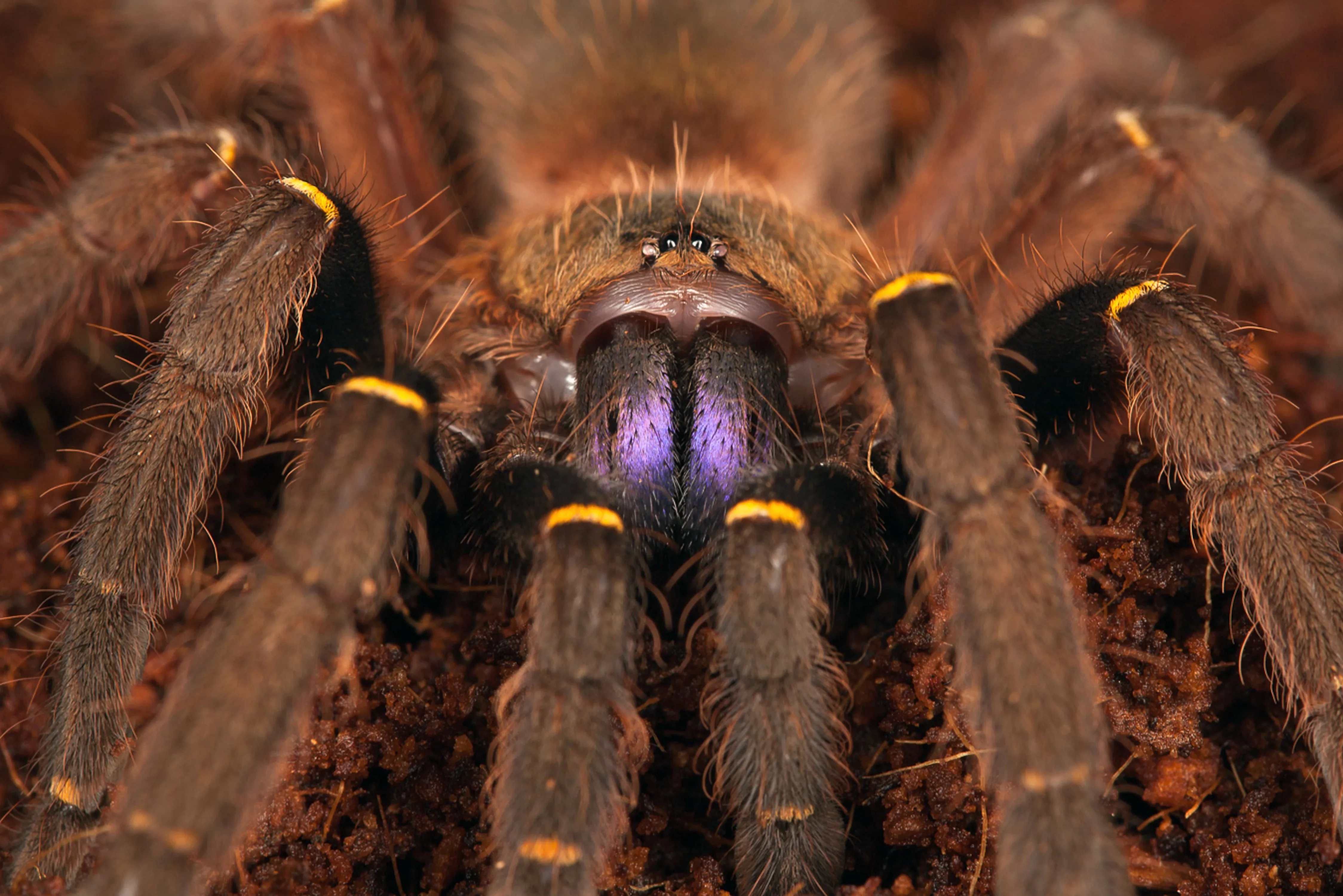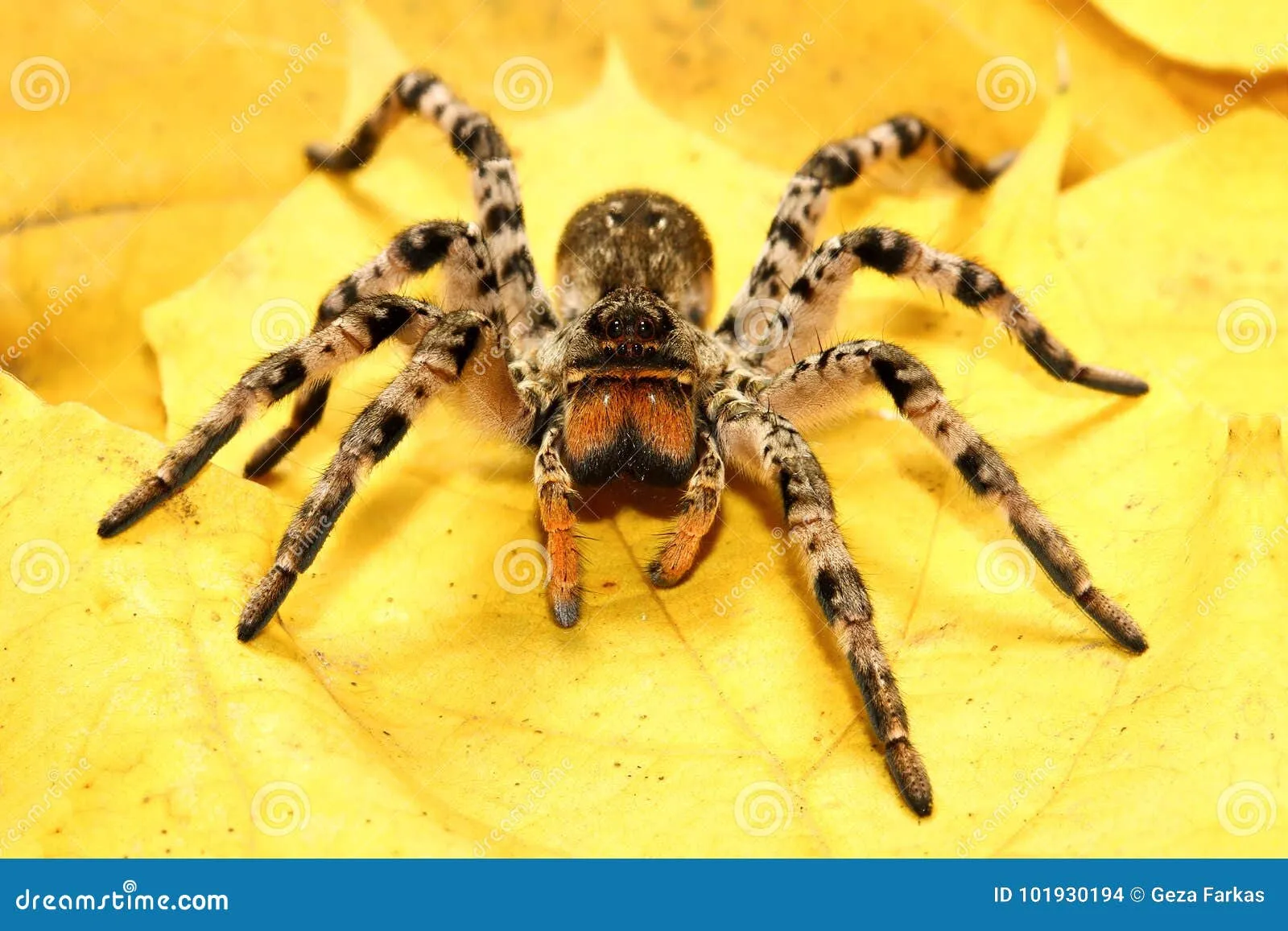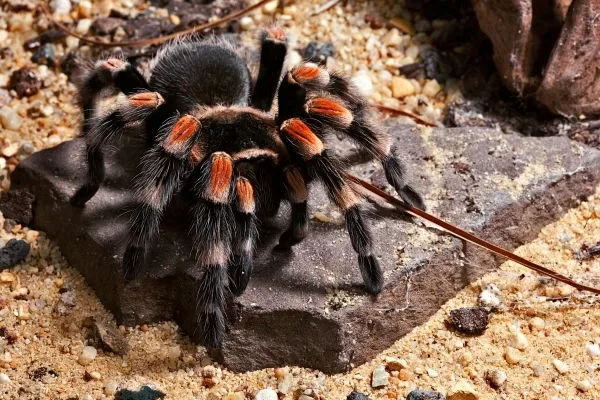What Makes a Tarantula Dangerous?
Tarantulas, despite their often intimidating appearance, are not inherently aggressive towards humans. However, the question of how dangerous they are is complex, involving factors like venom toxicity, bite severity, and individual reactions. Understanding these aspects is crucial for anyone who encounters these fascinating arachnids. While most tarantula bites are not life-threatening to humans, they can be painful and cause a range of unpleasant symptoms. The level of danger varies significantly between species, with some possessing more potent venom and others having defensive behaviors that increase the likelihood of a bite. Proper knowledge and caution are essential for minimizing the risks associated with tarantulas.
Venom Toxicity
The primary danger of a tarantula bite stems from its venom. Tarantula venom is typically composed of various enzymes and toxins, designed to immobilize or kill their prey, which usually consists of insects and small animals. The effects of the venom can vary widely depending on the species, the amount injected, and the individual’s sensitivity. In most cases, human reactions are localized, resulting in pain, swelling, and redness around the bite area. Systemic symptoms, such as muscle cramps, nausea, and fever, are less common but can occur.
Venom Composition and Effects

The exact composition of tarantula venom is still being studied, but it’s known to include a mixture of proteins, peptides, and enzymes. These components act on the nervous system, muscles, and other tissues of the prey. For humans, the effects are generally less severe due to our larger size and different physiological makeup. However, some individuals may experience stronger reactions, particularly those with allergies or sensitivities. The pain from a bite is often described as similar to a bee sting, and the duration of symptoms can vary from a few hours to several days. In rare cases, more severe reactions might require medical attention.
Species-Specific Danger Levels
Not all tarantulas are created equal in terms of danger. Some species possess more potent venom, while others are known for their more defensive and aggressive behaviors. This means that the risk of a bite, and the severity of its effects, can vary greatly depending on the specific type of tarantula. Factors such as the size of the tarantula, its temperament, and the environment it lives in can also influence how dangerous it is. Understanding these species-specific differences is key for anyone considering keeping a tarantula as a pet or encountering one in the wild.
Top 5 Most Dangerous Tarantula Species
Identifying the most dangerous tarantula species involves considering both the potency of their venom and their temperament. While no tarantula is likely to kill a healthy adult human, some species pose a greater risk due to their venom or defensive behaviors. Here are five tarantula species known for their potential to cause significant harm:
1 Goliath Birdeater

The Goliath Birdeater (Theraphosa blondi) is the largest tarantula in the world, known for its size and defensive behaviors. While its venom is not particularly potent, its large fangs and tendency to flick urticating hairs (tiny, irritating hairs) can cause significant pain and skin irritation. Bites from this species can be quite painful, and the physical trauma from the fangs can be more of a concern than the venom itself. The size of the spider also makes the bite more physically damaging.
2 Tiger Rump Tarantula
The Tiger Rump Tarantula (Cyriopagopus hainanus) is known for its potent venom and defensive nature. Found in Southeast Asia, this species is considered to have a painful bite and can cause significant localized symptoms, including intense pain, swelling, and muscle cramps. Their defensive posture and quick movements make them more likely to bite if they feel threatened. This spider’s venom is known to be quite strong, making it a species to be handled with caution.
3 Cobalt Blue Tarantula
The Cobalt Blue Tarantula (Cyriopagopus lividus) is another species from Southeast Asia, admired for its striking blue coloration. However, they are also known for their highly defensive nature and potent venom. Bites can be extremely painful, accompanied by significant swelling and potentially systemic symptoms. Their speed and willingness to bite when threatened make them a less-than-ideal choice for novice keepers.
4 Brazilian Giant Black Tarantula

The Brazilian Giant Black Tarantula (Grammostola pulchra) is known for its size and tendency to be defensive. While their venom is not considered extremely potent, the size of the spider and its bite can cause considerable pain and localized symptoms. They are also more likely to bite if they feel threatened, making them a species that requires careful handling. Being a larger tarantula means the bite is also more physically traumatic.
5 Indian Ornamental Tarantula
The Indian Ornamental Tarantula (Poecilotheria regalis) is a striking species with a potent venom. They are known for their fast movements and defensive behavior, increasing the chance of a bite if they feel threatened. Their venom can cause significant pain, muscle cramps, and other systemic symptoms. This species is best handled by experienced keepers due to its potentially dangerous nature and speed.
Bite Severity and Symptoms
The severity of a tarantula bite and the resulting symptoms can vary significantly depending on several factors, including the species of tarantula, the amount of venom injected, the individual’s sensitivity, and their overall health. Most bites result in localized symptoms, such as pain, swelling, redness, and itching at the bite site. These symptoms typically subside within a few hours or days. However, more severe reactions are possible, especially with certain species or in individuals with allergies.
Common Symptoms of Tarantula Bites

The most common symptoms of a tarantula bite include immediate pain at the bite site, which can range from a mild sting to a sharp, intense pain. Swelling and redness around the bite area are also common, along with itching and burning sensations. In some cases, there may be muscle cramps, nausea, headache, and a general feeling of malaise. The duration of these symptoms typically lasts from a few hours to a couple of days. It’s important to monitor the bite site for any signs of infection or worsening symptoms.
Allergic Reactions and Anaphylaxis
In rare cases, individuals may experience an allergic reaction to a tarantula bite. This can manifest as more severe symptoms, such as difficulty breathing, swelling of the face, lips, or throat, dizziness, and a rapid heartbeat. These are signs of anaphylaxis, a potentially life-threatening condition that requires immediate medical attention. If you suspect an allergic reaction after a tarantula bite, it’s crucial to seek medical help immediately. Always be aware of your body’s reaction and seek medical help if you feel unwell.
Tarantula Bite First Aid
If you are bitten by a tarantula, it’s important to take immediate steps to address the situation. The goal of first aid is to minimize the immediate effects of the bite and to prevent complications. While most tarantula bites are not life-threatening, proper care can help reduce pain and prevent infection. Knowing how to react quickly can make a significant difference in your recovery.
Immediate Steps to Take

Immediately after being bitten, wash the bite area thoroughly with soap and water. This helps to remove any venom that may still be on the skin and reduces the risk of infection. Apply a cold compress or ice pack to the bite site to help reduce pain and swelling. If possible, keep the affected limb elevated to further minimize swelling. Over-the-counter pain relievers, such as ibuprofen or acetaminophen, can be taken to manage pain. It’s also a good idea to take a photo of the tarantula, if possible, to help with identification, which can be useful for medical professionals.
When to Seek Medical Attention
While most tarantula bites do not require a visit to the doctor, there are certain situations where medical attention is necessary. If you experience severe symptoms, such as difficulty breathing, swelling of the face or throat, dizziness, or a rapid heartbeat, seek immediate medical help. These could be signs of a severe allergic reaction. If the bite site shows signs of infection, such as increasing redness, warmth, pus, or fever, you should also consult a healthcare professional. If the pain is severe or does not subside after a few days, it’s advisable to seek medical advice. Any unusual symptoms or concerns warrant a visit to the doctor.
Debunking Tarantula Myths
Tarantulas are often misunderstood creatures, and many myths and misconceptions surround them. These myths can create unnecessary fear and confusion about these animals. Separating fact from fiction is essential for understanding their true nature and the actual risks they pose. Being informed can help you appreciate them for what they are and stay safe in any encounters.
Myth of Aggressive Behavior

One common myth is that tarantulas are inherently aggressive and actively seek to attack humans. In reality, tarantulas are generally docile and prefer to avoid conflict. They are more likely to run away or hide when they feel threatened. Bites usually occur only when a tarantula feels cornered, threatened, or is being handled roughly. Understanding their natural behavior is key to dispelling this myth and appreciating the creatures.
Myth of Lethal Venom
Another prevalent myth is that tarantula venom is deadly to humans. While tarantula venom does contain toxins designed to incapacitate prey, it is rarely life-threatening to humans. Most bites result in localized pain, swelling, and other minor symptoms. The venom of most tarantula species is not potent enough to cause serious harm to a healthy adult. It is important to remember that, while the bite might be painful, it is not typically fatal.
